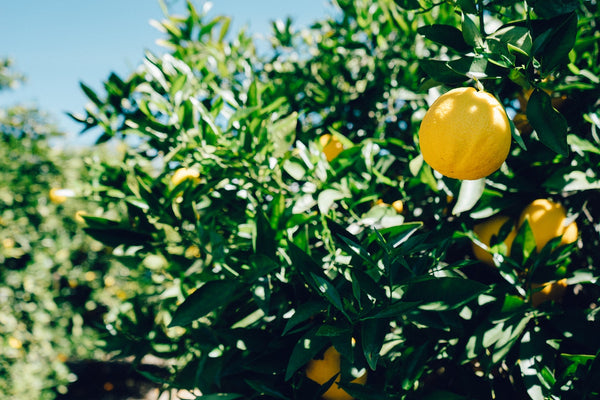A couple of weeks back, we put the spotlight on unique citrus to celebrate Halloween and beyond. But now that Halloween has come and gone (and the holidays are coming so soon!), it’s time to discuss long-term care and maintenance for your unique citrus or winter citrus, from the Loquat to the Owari and beyond.
Thankfully, it’s easy to help these interesting little cultivars thrive. And with our tips and tricks, you’ll be well on your way to gorgeous growth indoors, despite the chilly weather outdoors.
What is the Loquat and Winter Citrus?
First, it’s important that we cover a few different types of well-suited citrus trees to grow indoors during the wintry weather months. To keep it simple, we’ll cover our top three citrus plants for seasonal care.
1. The Loquat Tree
Capable of tolerating winds, drought and a wide spectrum of soil types, Loquats, also known as Japanese Plums, thrive outdoors but do particularly well inside. Basically, well-drained soil and plenty of water are all the Loquat needs.
Simply keep this crisp little citrus tree in a container and move it inside before temperatures dip below freezing, and a healthy harvest of delicious, brightly-hued Loquats will follow.
2. The Owari Mandarin Tree
As the most cold tolerant orange tree available, Owari Mandarins, also called Satsumas, are not limited to hot Southern states. But for effortless year-round growth, and for Owari lovers in colder and Northern areas (growing zones 4 through 11), potted Owari Mandarin Trees are essential.
Just grow your Owaris in large containers and move them indoors or in your garage when cold temperatures strike.

3. The Meyer Lemon Tree
Ok, so it’s one of our most popular varieties. But can we really talk about indoor citrus growing without mentioning the Meyer Lemon? Though the Loquat and Owari are fresh, unique favorites, the Meyer fits the bill in the best way when it comes to indoor citrus growth.
For starters, the Meyer Lemon Tree has remarkable cold and heat tolerance so anyone in the country can grow it. And our Meyers max out at around 8 feet, so you don’t have to worry about them out-growing your space.
Plus, what’s not to love about their jasmine-citrus fragrance filling your home through those long winter months?
How to Move Indoors: A Checklist
-
Check the Weather
First, wait until the temperatures stay above 40 to 50 degrees and there is absolutely no chance for frost before moving your tree.
-
Don’t Strain the Tree
If your citrus tree seems too difficult to move, place it on a plant tray with wheels for more effortless movement.
-
Gradually Increase Time Indoors
Your citrus needs to build tolerance, so give your tree an hour of direct sunlight during its first day outside, and then move it into the shade. For about two weeks, slowly increase the amount of time that your tree spends in the direct sunlight.
-
Adjust the Watering Schedule
Outdoor growth often means that you need to water your citrus a bit more frequently. As you move your Loquat, Owari or Meyer Lemon indoors, watering will need to be adjusted.
-
Don’t Panic
Leaf drop and fruit drop are normal, so don’t panic! Keep in mind that this isn’t a sign of danger – instead, this is a sign of the tree adjusting to its new indoor environment. If all the leaves die, simply pick them off the branches – you should see new leaves in about six weeks.
-
Thin the Crop
By removing any smaller fruit your tree is growing, it will focus its energy on adjusting to the indoors instead of growing tons of new fruit – your fruit will eventually grow larger and fuller as a result.
-
Bug Defense
Before bringing trees inside for the colder months, spray them with an all-natural, organic pesticide to keep bugs away.

Citrus Loves Container Growth
Basically, Citrus Trees are wonderfully suited for container growing. Beautiful foliage meets fragrant blooms and succulent fruit for a plant that ticks all the boxes of a must-have. And most importantly, they can be kept at a manageable size in a container. From the Loquat to the Owari or Meyer, here are our main three tips to keep in mind:
- These trees thrive best if they are not overwatered – ensure that you let your plants dry between waterings.
- Once you move your plants indoors, air circulation will become important for them, so it’s best to increase the humidity in your plants’ environment. To do this, you can either mist the leaves daily with a spray bottle, or you can place your plants on top of moist pebbles.
- Indoor plants also typically need at least six hours of sunlight a day. You can use a grow light can as a substitute, or simply place them in an area where they will receive as much light as possible – a sun-soaked, South-facing window should do just fine.
Cover all these bases, and you’re good to go. Growing your unique, delectable citrus indoors, especially during the winter months, is as easy as 1-2-3.


